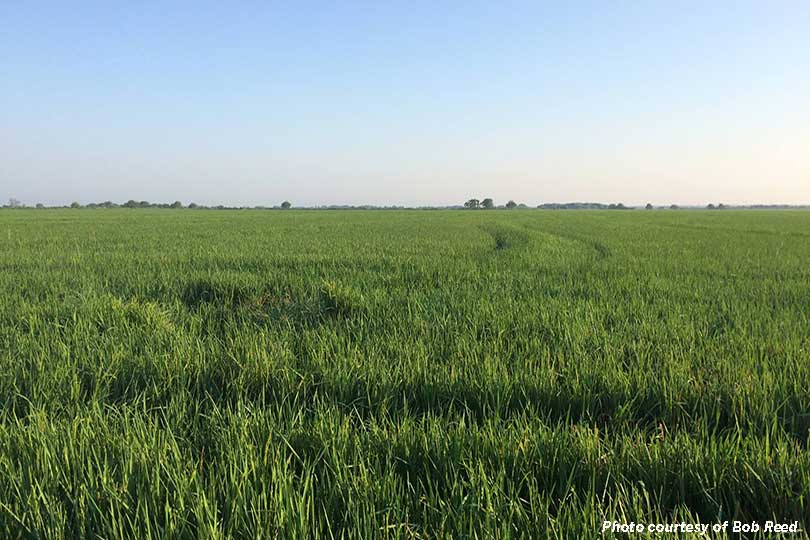By Jessica Domel
News Editor
Texas rice is looking good. Thanks to favorable weather, most rice farmers had finished first harvest by early September and were already overseeing the second, or ratoon, crop.
“The first rice crop yields turned out to be good,” Bob Reed, rice farmer and Texas Farm Bureau state director, said. “It was a little less than it looked like. It was probably a 7,500-pound yield. I would’ve bet anything on an 8,000-pound yield, which is pretty exceptional, but yields on the first crop were still good.”
After the first cutting of rice, fields are fertilized and irrigated to produce the second crop.
“Fields are not actually replanted to produce the second crop,” Reed shared on Facebook. “When the first crop plants have completely matured, they produce new ‘shoots’ from the base of the plant, which grow to produce the second crop.”
First crop is harvested in July and August in Southeast Texas where Reed farms. The ratoon, or second, crop will be ready for harvest in October.
Although the second crop won’t yield as much as the first, Reed said there’s still potential there.
“Under almost ideal conditions, yield may be 50 percent of what the first crop is—anywhere from 25 to 50 percent,” Reed said. “All of it revolves around Mother Nature. The first crop was out early enough to where we have enough growing season left to hopefully reach our potential on this second crop.”
Reed and other rice farmers continue to check levees to ensure the second crop has all it needs to survive.
“One of the bigger jobs on the rice farm is keeping the fields flooded when it comes to that stage of the crop, and that’s where we are now on the second crop,” Reed said. “The crop is actually growing underwater from beginning to end. When you get to that point of growth in the crop, you flood the field and maintain that field.”
That means checking levees for holes left by animals like rats, raccoons and even alligators.
“You have to constantly monitor your fields to make sure the flood is constant across the field,” Reed said. “Then, when you have those problems with holes in levees, you get your shovel, rubber boots and you go patch it and look for the next one.”
Rice needs nighttime temperatures of 60 degrees or better to grow actively, he said. When temperatures fall below that point, the plants shut down, which delays or prevents growth.
Reed grows long-grain Presidio rice.
According to a Sept. 2 update by RiceTec, about 10 percent of the first rice crop remains in the field along the Texas Gulf Coast. Farmers are reporting sprouting in the fields that remain.
“It is worse in fields with lodged rice, but it is evident everywhere,” Derrol Grymes, district sales manager for RiceTec, said in the report.
Some farmers are concerned with a lack of sunlight and the effect it may have on rice yields.

